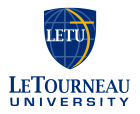Below is a summary of the abstract you submitted. Presenting author(s) is shown in bold.
If any changes need to be made, you can modify the abstract or change the authors.
You can also download a .docx version of this abstract.
If there are any problems, please email Dan at dar78@pitt.edu and he'll take care of them!
This abstract was last modified on March 28, 2023 at 7:13 p.m..

Bacteriophages have proven beneficial to humans in medicine, the pharmaceutical industry, bioremediation, and many other fields. In medicine, they have been especially effective in treating antibiotic-resistant bacterial infections. In bacteria, the MazG-like nucleotide pyrophosphohydrolase gene controls a toxin-antitoxin system which can trigger programmed cell death through the hydrolyzation of the (p)ppGpp alarmones. At increased levels, alarmones enable bacteria to stop replicating and enter metabolic quiescence, thereby enhancing their survival under stressful conditions, including antibiotics. Could more knowledge about the “MazG” gene in mycobacteriophages provide insights into potentially using it as an antibiotic treatment enhancer in phage cocktails to overcome multidrug resistant bacterial infections? This research sought to explore more about this gene across mycobacteriophage clusters at sequence and structural levels. In this study, the MazG gene was found in mycobacteriophages of cluster X, subclusters A2, A11, M1, and singleton phage DS6A. A comparative analysis of MazG amino acid sequences was done in phages L5 (A2), Sham4 (A11), Glaske16 (M1), Nebkiss (X), DS6A (singleton), and Mycobacterium tuberculosis using Multalin and BLASTp in NCBI and PhagesDb. BLAST revealed substantial inter-cluster diversity in MazG gene homology. The sequences were also run in Phyre2 to determine protein structural symmetry. Each gene possessed tertiary protein structure synteny with the M. tuberculosis nucleoside triphosphate pyrophosphohydrolase with MazG domains. Because structure correlates to function, it is plausible that the mycobacteriophage MazG gene serves a similar function to that of M. tuberculosis. The MazG gene has been found in temperate mycobacteriophages. Temperate phages often lie dormant until their host undergoes stress that threatens its survival, at which point the infecting phage switches to the lytic cycle, replicates, and lyses the bacterial host cell. Further research into MazG gene activation is necessary to determine the full extent of its function and its therapeutic potential. If the MazG nucleotide pyrophosphohydrolase gene could be activated, bacteriophages could possibly be used in viral cocktails as complementary therapy to treat tuberculosis and other antibiotic resistant infections.

